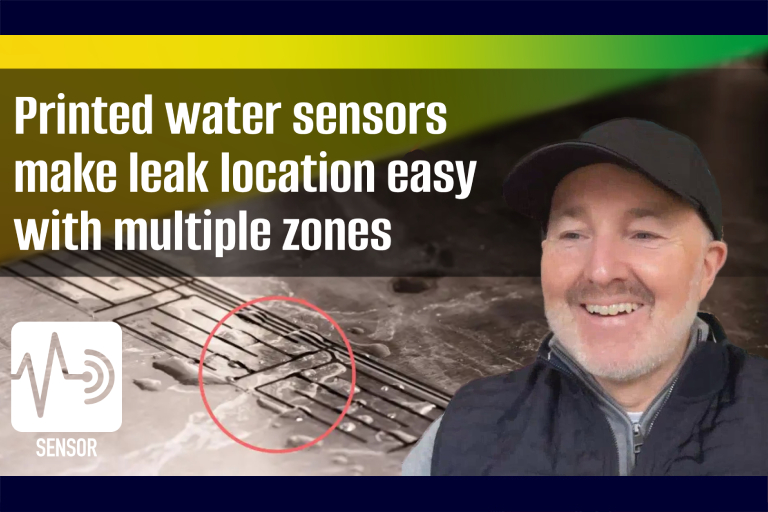In this week’s ipXperience interview, Guy chats with Matt from LAIIER, a London-based start-up that has created a LoRaWAN-connected water leak monitoring sensor. The main innovation, however, is that this sensor is printed onto a PET tape substrate, and a sticky backing makes this thin-film solution easy to install for smart building applications where continuous leak monitoring is essential.
As Matt explains, insurance claims for water leaks in buildings cost £1 billion every year in the UK alone. The unique sensing form factor of LAIIER’s solution is far more cost-effective than traditional water sensors and can be used to monitor a large area with high resolution of where the leak has occurred. LoRaWAN connectivity for multiple sensing units presents a building manager with a network of sensors that can be configured via a cloud-based dashboard for better insights and reliability with fewer false positives. Each sensor features multiple sensing electrodes/regions that can be used to precisely locate a leak of as little as 2 drops of water and track the propagation of this leak over time in order to diagnose the seriousness of the event.
The principle of operation is simple: As water short-circuits the printed tracks along the sensing tape, it changes the voltage reading within the sensor module. What sets LAIIER’s printed sensor technology apart from other solutions is that, due to ease of manufacturing, it is much more scalable; the longer it gets, the less additional cost to increase the length, which allows these sensors to cover more area at lower cost.
Like Guy, you might be wondering where you would know to place these sensors, and Matt delves into the best places based on the cost of the damage that a leak may cause and the likeliness of leaks occurring. Matt also discusses the current alternatives to LAIIER’s solution and the advantages that this innovation has over each of them. These older solutions include flood sensors, inline sensors, and cable/rope sensors, as well as visual inspection, all of which have limitations/challenges with regards their sensitivity, ease of installation, location pinpointing, and false positives.
You must be signed in to post a comment.

Comments
No comments yet